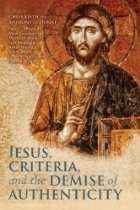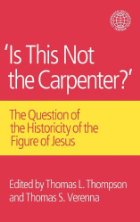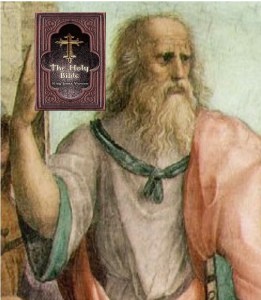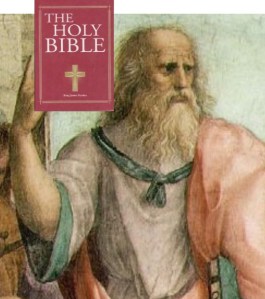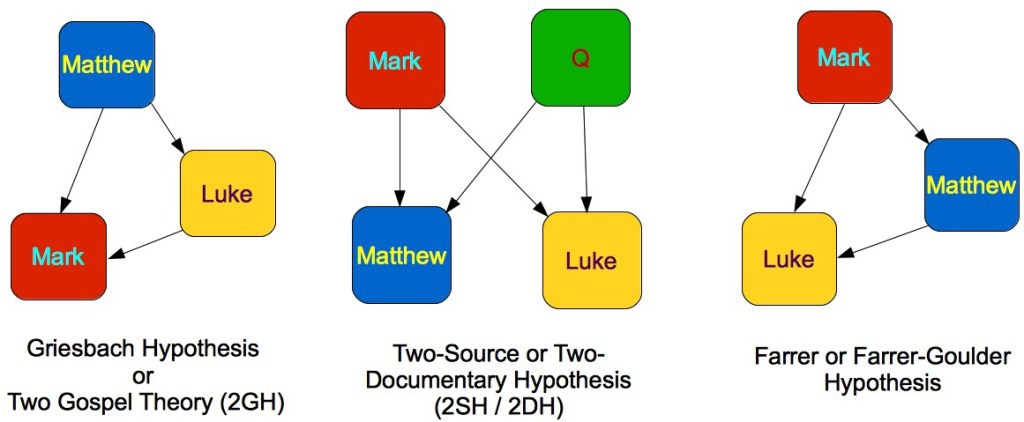 My copy of Jesus, Criteria, and the Demise of Authenticity arrived today. I had the impression that there is some curiosity “in internet land” as to whether this work will be of interest among Christ Myth theorists. If I am not judging too hastily, I will say, “No”. Everyone knows that the criteria used to establish “historicity” of a saying or deed of Jesus are shot through with logical fallacies. This has surely been well enough publicized by many mainstream and minorstream scholars by now. Or perhaps I don’t wear the same blinkers as many theologians who confuse apologetics with historical research.
My copy of Jesus, Criteria, and the Demise of Authenticity arrived today. I had the impression that there is some curiosity “in internet land” as to whether this work will be of interest among Christ Myth theorists. If I am not judging too hastily, I will say, “No”. Everyone knows that the criteria used to establish “historicity” of a saying or deed of Jesus are shot through with logical fallacies. This has surely been well enough publicized by many mainstream and minorstream scholars by now. Or perhaps I don’t wear the same blinkers as many theologians who confuse apologetics with historical research.
The book does not address historicity. Note the title. It says “Authenticity”, not “historicity”.
There’s an interesting Introduction by Anthony Le Donne that I’d like to post on some time. He surveys the history, especially “American” meaning U.S. history, of historical research related to the Bible and Jesus. It reminds me of the title of a book by Ashleigh Brilliant, I Have Abandoned My Search for Truth and Am Now Looking for a Good Fantasy. (Ashleigh Brilliant, I have read, is always on the warpath against anyone who uses one of his epigrams without first paying him for the privilege, so I hope he doesn’t object to my freely promoting one of his many published titles for him here instead.)
I have long looked forward to doing posts on historiography again, and in the process place the postmodernist historiography in its context. In that series I would certainly refer to Anthony Le Donne’s earlier book, Historical Jesus: What Can We Know and How Can We Know It?. That little volume is a handbook for theologians on how to save or redirect a new quest for the “historical Jesus” through a postmodernist approach to sources.
It contains a foreword by Dale C. Allison Jr. He was the scholar, some will recall, cited by James McGrath as being one of the pioneers responsible for paving the way for a whole new revolution in historical studies across the board. (See my post, New Testament Scholars Are Pioneers In Historical Methods.) McGrath learned from Allison the following:
Even fabricated material may provide a true sense of the gist of what Jesus was about, however inauthentic it may be as far as the specific details are concerned. (Review of Dale Allison, Constructing Jesus)
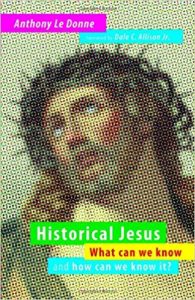 Here is one way to illustrate how postmodernist historical research into the ‘historical Jesus’ works. The illustration is taken from Anthony Le Donne’s Historical Jesus. Le Donne spices up the explanation with geometric and arboreal diagrams and phrases like “moving on from positivism”, “patterns of memory”, “thought-categories”, “memory refractions” and “spiraling memory traditions”. This is a Good Thing™, because it shields the reader from direct exposure to the befuddling logical circuitry behind it all.
Here is one way to illustrate how postmodernist historical research into the ‘historical Jesus’ works. The illustration is taken from Anthony Le Donne’s Historical Jesus. Le Donne spices up the explanation with geometric and arboreal diagrams and phrases like “moving on from positivism”, “patterns of memory”, “thought-categories”, “memory refractions” and “spiraling memory traditions”. This is a Good Thing™, because it shields the reader from direct exposure to the befuddling logical circuitry behind it all.
First, find two contradictory Jesus “traditions”.
Next, place these two “traditions” 5 centimeters apart on a sheet of plain white paper on a flat table.
Thirdly, sprinkle lightly with extra-fine grade authenticity powder.
Now, with some geometry tools and an HB pencil, draw straight lines from those two “traditions” to a third point so as to form an equilateral triangle. (Don’t worry about the powder. That will add to the final effect.)
Now erase those straight lines and replace them with spirals. (Replace the scattered authenticity powder.)
You have now recreated the original memory refraction that was further refracted through spirals to reach our extant contradictory evidence.
Finally, focus one eye on the start of each of the spirals, roll each eye back through the spirals to their other point, and you will come to understand how we arrived at our extant contradictory evidence.
Ergo, Jesus existed.
Okay, that was tongue in cheek. But it is not far off what Le Donne writes anyway, seriously. Only in Theology Departments!
Like this:
Like Loading...


